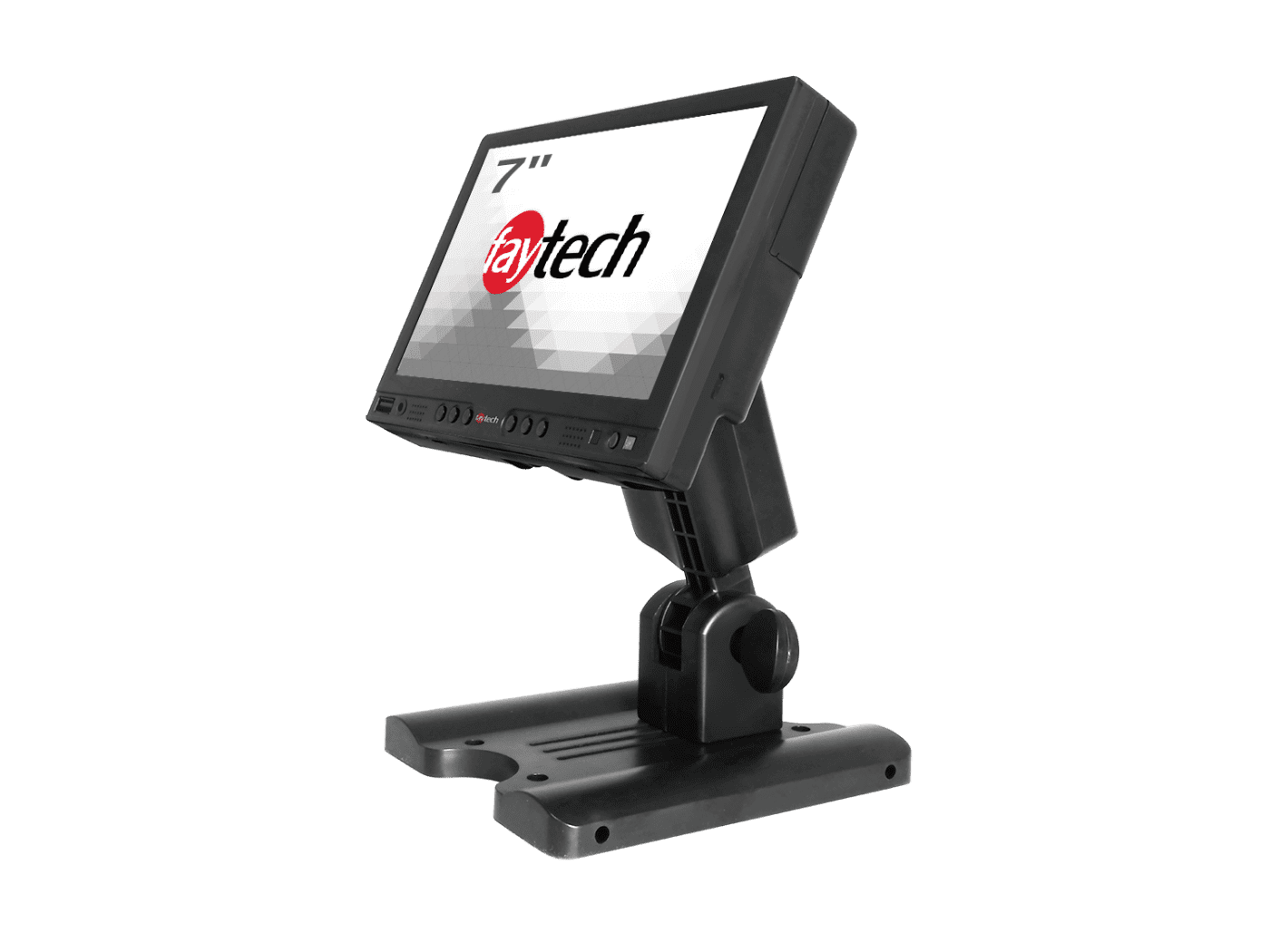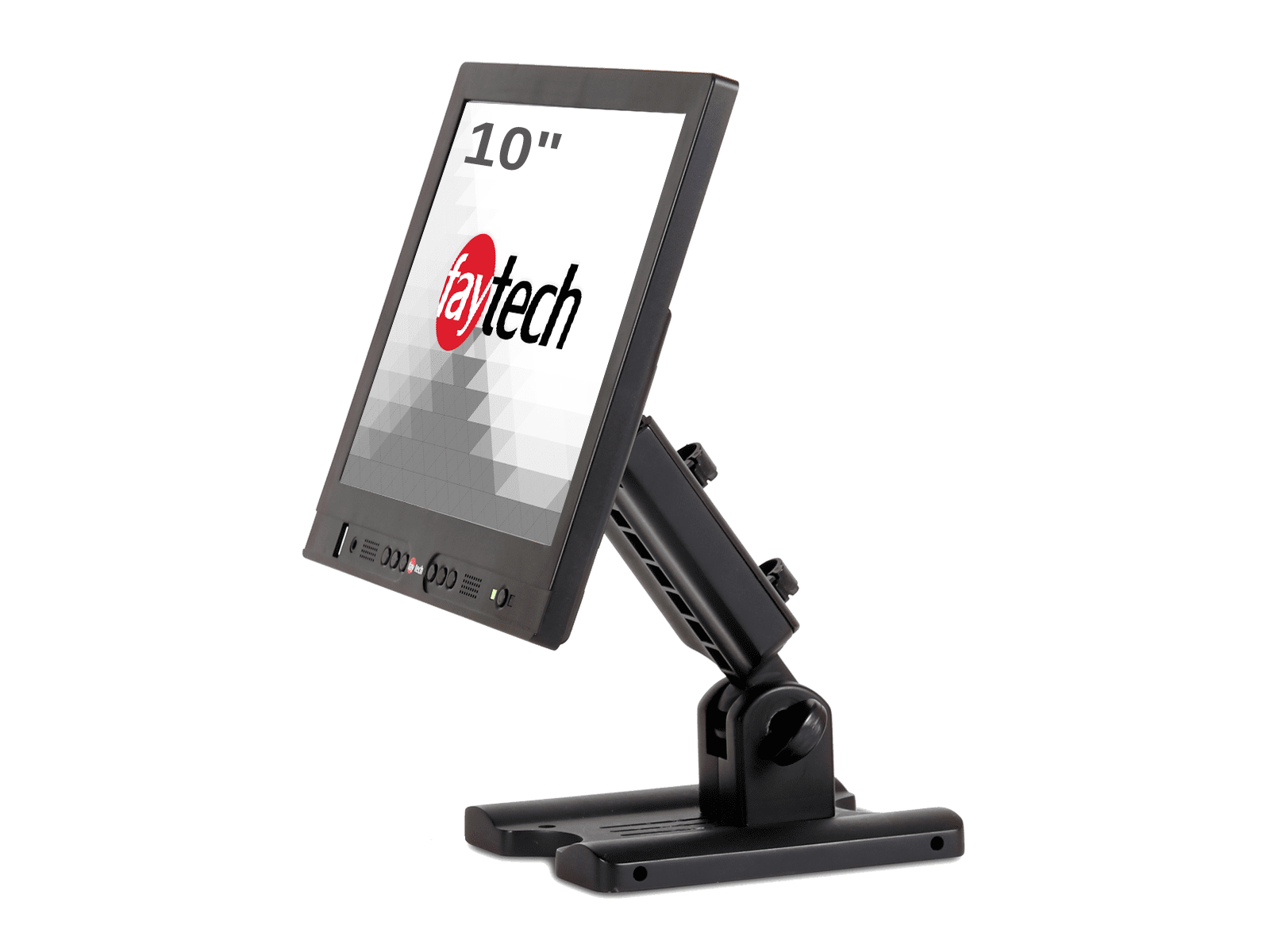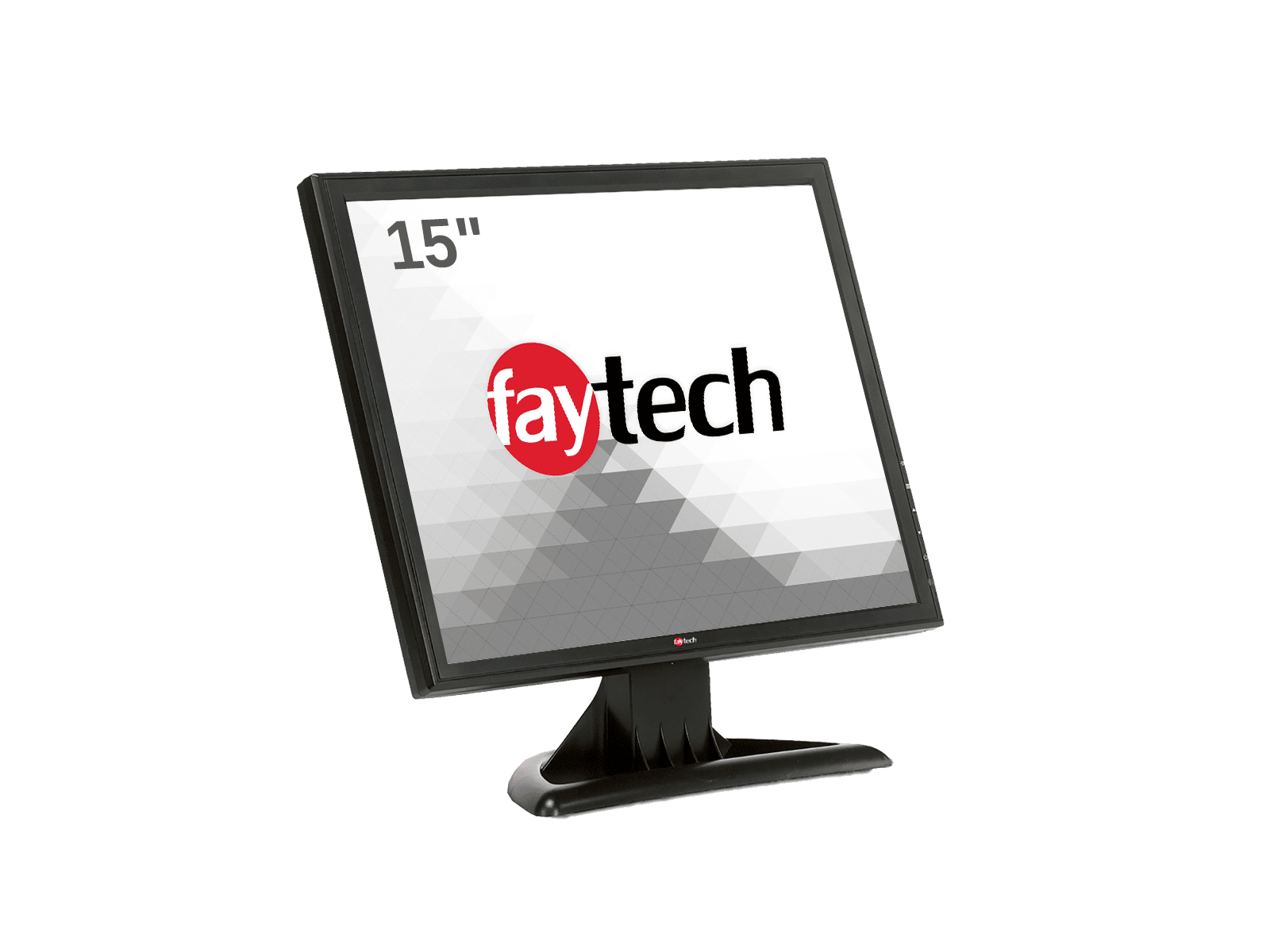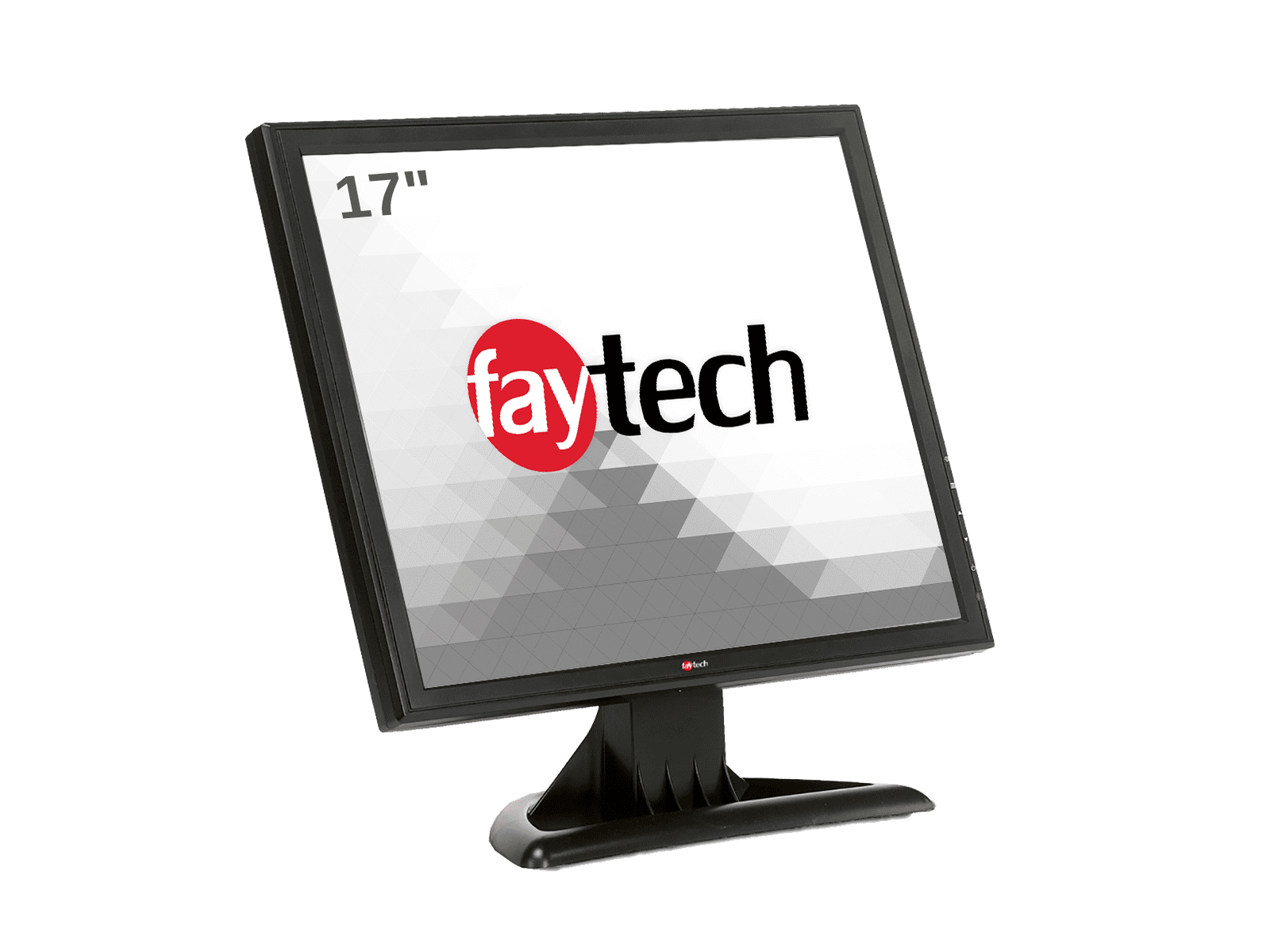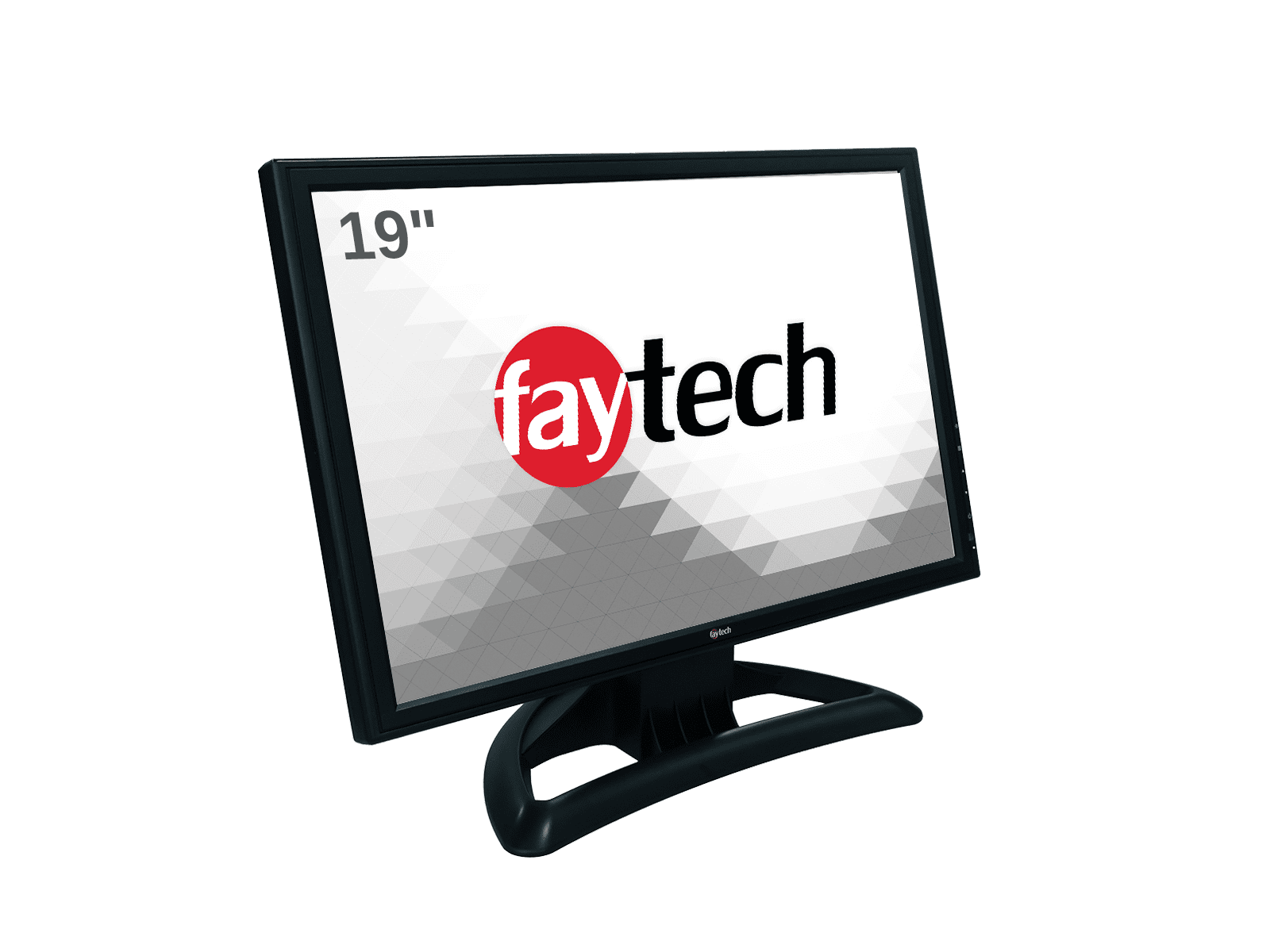Faytech North America Resistive Touch Screen Monitor
faytech’s North America Resistive TouchScreen Displays make work processes simpler, more efficient and faster.
These touch monitors come packed with expansive features and the standard industrial and commercial connectors. Each Touchscreen Display is manufactured with a backlight industrial LCD screen (rated with a lifespan of 20,000 – 30,000 hours), and 4-wire or 5-wire resistive touch screens that ship with an anti-glare coating designed to optimize user experience.
| Name | Image | SKU | Price |
|---|---|---|---|
| 7" Resistive Touchscreen Monitor | FT07TM | $246.23 | |
| 8" Resistive Touchscreen Monitor | FT08TM | $173.25 | |
| 10" Resistive Touchscreen Monitor | FT10TMB | $295.75 | |
| 15" Resistive Touchscreen Monitor | FT15TM | $356.46 | |
| 17" Resistive Touchscreen Monitor | FT17TM | $371.66 | |
| 19" Resistive Touchscreen Monitor | FT19TM | $548.87 |
Considering Buying Resistive Touch Screen Displays for Commercial Usage?
faytech North America’s no defective guarantee makes this investment a safe bet for your business. They can be easily stationed anywhere with a faytech stand and can also be wall mounted.
• The 7″ – 12″ include VGA + HDMI ports, extended current input of 8-36V, and three video inputs
• The 15″ – 22″ include DVI-D connectors and VGA (HDMI & S-Video connections available on the 22″ version)
The resistive touch screen series is an excellent option for POS systems, control panel interfaces in industrial facilities, kiosk input interfaces, machine interfaces, and in numerous other commercial and industrial applications.
If you have any questions regarding our touch panel technology, sizes or usability, just contact us today and we will be happy to answer your questions.
More Information
Below are some common FAQs and guide
to Resistive Touchscreen Panel Technology
There are often many questions when it comes to adding touch panels and touch screen technologies to an organization. Resistive touch screen technologies offer many benefits when it comes to commercial and industrial usage since it can be utilized with a stylus or stylus-like object, gloved fingers, and even bare fingers.
Resistive touchscreen technologies and capacitive touchscreen technologies differ from each other in the ways that they interact with the human body.
Resistive touch screens are made from multiple thin layers. When a user applies pressure to these touch panels, the top layer will bend and contact the bottom layer. In these resistive touch screens, this action will close the circuit and result in a current loop. Resistive touch screens are mainly used in single-touch devices. In general, resistive touchscreens are less expensive to manufacture and integrate since they are designed to respond to most forms of pressure. These touch screens are ideal for simple touch panels like controls or applications that need to be used with gloves.
Capacitive touchscreens typically utilize 2 layers and the multi touch panel responds to distortions in the electrostatic field of the panel from the human body or a conductive pen or stylus. Capacitive touch panels are designed to respond to multi-touch gestures, and typically require less pressure to register interactions.
Each of these touch screens offer unique benefits and ways of responding to pressure and contact applied to the touch panels.
While the production costs of touchscreen technology have been decreasing over the years, the differences in these technologies and how they respond to the pressure of multi touch or single touch inputs during operation is quite unique.
How do resistive touch screen technologies transform the way business is conducted?
A resistive touch friendly surface is very popular in commercial settings like restaurants, airports, ATMs, industrial automation, in computer-based training, government and educational locations, and much more.
In fast food restaurants, customers use resistive touch screens and touch displays as ordering points where they can place their order on their own without dealing with the sales clerk.
In computer-based learning, a touchscreen is very helpful, especially since it keeps the learner focused on the screen and learners do not need any technical know-how to operate the keyboard or hardware.
The resistive touch screen monitor technology is implemented either in the form of all-in-one systems or stand-alone monitors. It is common for touch sensitive peripherals to be added to an ordinary computer display unit.
Once a touch controller is connected to the touch desktop PC, an inexpensive touchscreen solution can be quickly created. This controller communicates between the PC and the monitor, creating an interactive touch solution for users.
What are the benefits of using touch screen monitors in industrial or commercial settings?
Touch screen monitors save a lot of space and require virtually no maintenance, and this has made them popular for information kiosks, dry/wet room usage and in most industrial and commercial settings that require quick input interactions. These displays come either in the form of add-on panels that are fixed over a regular one.
The monitor can be a complete unit with an industrial embedded motherboard, which has a screen with a built-in touch sensitive overlay.
These screens are the perfect solution for medical facilities, scientific applications, research laboratories, industrial plants, and commercial environments.
What is the origin of resistive touch technology?
Resistive display technology has been around since the 1970s and there are several companies like faytech North America that manufacture touch screen equipment.
The screen is a touch sensitive device that includes the video unit and the input devices (keyboard and mouse). With the screen, users can do away with the multiple hardware systems that were required to make use of a computer system.
The technologies inside the faytech North America touch systems
There are several touch-sensitive technologies applied in manufacturing faytech NA touchscreen monitors. They can utilize capacitive, resistive, or surface wave sensor technology.
The touchscreen PC is one where a thin metal-based resistive layer functions as the main sensory layer. This layer is receptive to touch, transmitting touches as an electrical signal.
In contrast to this, a capacitive touchscreen uses the capacitive tendency of the human body to cause interference in its own layer and sense touch.
The other alternative, the surface wave interface to, utilizes ultrasonic waves which pass over the touch panels. These waves will be absorbed when a person interacts with the screen.
The wave alteration initiates the touch event and the location. Touch-screen technology uses advanced principles of physics and simplifies communication tremendously. With user-friendly operation and an attractive interface, the displays are highly preferred for games, training, and at information desks.
How to Choose Your Touchscreen Monitor
What is the best resistive touch screen monitor for a business and what are the major differences between the touch screens? The most important differences depend on what the individual needs of the business itself would be. Which option is the recommend one for you – resistive touch or capacitive touch? It depends on the following:
- What will be the general use requirements of the device or a use cas example?
- Is this a model that will see a lot of heavy traffic, or an office touchscreen that will be used by only a few people?
- What is the budget available for this technology?
Modern resitive touch displays can handle
- High resolution
- Contrast ratios
- Presentations
Resistive monitors or PC touch kiosks are great for point-of-sale opportunities within a variety of settings.
Features to consider might include
- Customer LED readouts
- Credit card sliders
- Speaker bars
- Biometrics
The higher quality resistive touchscreen monitors can handle dust, debris, and the accidental scratch without compromising the integrity. Kiosks have their own individual factors when it comes to touch screen features:
- Size
- Durability
- Available features
These all play a major factor in finding the best monitor for your individual needs. Many kiosks require ports for RCA connectivity while including protective casing to decrease chances of damage.
A viable long term investment in most business systems
Mechanic shops, busy restaurants kitchens, even work areas where high-pressure water is being used now, have successfully adapted to LCD display technology with the help of all of the new protective rugged monitors that are now readily available. LCD touch technology has long been proven to be a viable, long-term business investment that has withstood the test of time.
Contact Faytech North America for all your questions.
OUR OFFICES
NEW YORK
239 West 29th Street
Ground Floor
New York, New York 10001
FLORIDA
7630 NW 25th ST
Suite 2A
Miami, FL 33122
CALIFORNIA
804 Anacapa Street
Santa Barbara, CA 93101
+1 646 843 0877
sales@www.faytech.us
Latest Articles
- 10 Features That Make Resistive Touch Screens Ideal in Industrial Settings
- faytech resistive screen technology
- Is Resistive Tech the Future of Computing or Already On Its Way Out?
- Resistive touch screen monitor technology is revolutionizing computing
- The Impact of Resistive Touch Screen for Businesses
- What is the Definition of Resistive Technology
- Which is Better? Resistive vs Capacitive
- Why Your Business Needs Our Resistive Touch Screen Advantages
- 20 Features of 5 Wire Resistive Touch Screens

